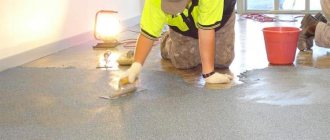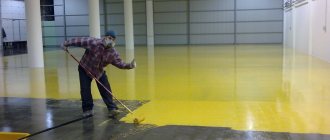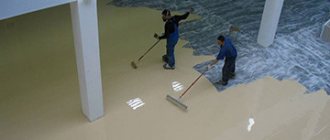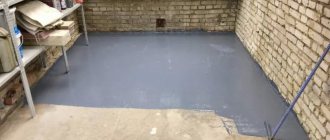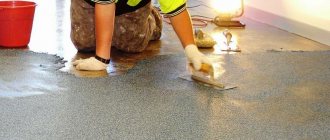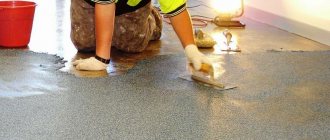02.01.2022 12:00
53
Cooking is an art. Restaurants and cafes try to attract visitors with delicious and unusual dishes. And even at home, people want to diversify their diet, including using seasonings and food additives. One of these additives is topping. In this article we will tell you what it is, what dishes it is used for, and what you need to pay attention to when choosing it.
This term refers to special food additives that are used to give dishes a unique taste. Supplements come in sweet and unsweetened varieties. In our country, they are mainly used for making desserts, decorating dishes and drinks. In European cuisine they are also used for preparing second courses.
Plus, they come in a wide variety of types, flavors, and textures. The following types are popular:
- flavoring syrups from berries and fruits;
- milk-based creams and whipped cream;
- fruits or berries, both sugared and canned;
- melted or grated chocolate;
- industrially produced sauces and jams.
Topping properties
How much does the topping cost (average price per 1 kg)?
Moscow and Moscow region.
300 rub.
People have long begun to produce various types of confectionery products. Therefore, modern confectioners have in their arsenal no single way or technique to show their sweets and confectionery products at the highest level. Indeed, today there is a significant number of different confectionery decorations that are used in the manufacture of sweets, as well as baked goods or desserts.
It is noteworthy that confectionery decorations are differentiated depending on the composition of the original ingredients that were used in the preparation of the dish. In addition, confectionery products are classified depending on the product for the preparation of which one or another type of decoration will be used.
Topping flooring technology
Toppings come in two types:
- Dry;
- Liquid.
For both cases, work is carried out using different technologies.
Dry method
Dry toppings are sold in the form of dry mixes in bags of 25, 50 kg. Application is carried out on freshly laid concrete. To work, you will need a topping trolley - a special distributing device that evenly scatters the powder. When installing industrial floors over large areas, manually spreading the mixture is very inconvenient and ineffective. To grind the surface, craftsmen use grinding machines with a large working disk.
- The poured concrete screed is rubbed over the entire area with a grinding machine. This is necessary to level the surface before it sets.
- Using a topping cart, apply the dry mixture in a volume of 2/3 of the total amount in the direction from the windows to the exit. As the powder is poured, it absorbs moisture from the concrete and the necessary crystallization reaction occurs.
- After applying the powder, the concrete is ground again. At this stage, the main leveling and filling of the concrete surface with a fixer occurs.
- Then distribute the remaining powder and allow it to soak.
- The grouting process follows again.
- After 2-3 days (sometimes 24 hours is enough), the frozen surface is cleaned with blade knives. The process is repeated 2-3 times until a mirror surface is obtained.
- According to the technology, it is necessary to cover the surface with curing - a solution that forms a thin film that prevents the evaporation of moisture from the stone while the concrete is hydrating. Curing is applied with a roller or spray method some time after finishing grouting.
- Expansion joints are cut to prevent cracking of concrete during shrinkage and hardening, which will finally stop no earlier than 28 days. The seams are filled with sealant.
The floor can be fully used after 28 days, when the finishing layer, which includes cement, has fully reached its design strength.
The average topping consumption per 1 m2 is 4.5 – 5 kg.
Liquid formulations
The advantage of liquid mortars is that they can be used on both a fresh screed and an existing floor. The effect will be equally good if the application is followed:
- It is necessary to ensure temperature conditions in the room +5…+35°С.
- The surface of the existing concrete coating is thoroughly cleaned of dust, if necessary, concrete or cement repair mortar is poured into cracks and potholes, and when working with a fresh screed, the mortar is polished.
- Liquid topping is applied to the prepared base with a roller or sprayer. It is necessary to monitor its absorption - the solution should be reapplied to areas where rapid absorption has occurred.
The layer thickness should be 2-3 mm above the concrete. Average consumption is 4-5 liters per 1 m2 of surface. The amount of absorption depends on the quality of the concrete base.
Within 1 day, the complete process of polymerization and compaction occurs, the surface becomes perfectly smooth, dense and durable. Excess is washed off with water. You can use the floor within 24 hours.
The undeniable advantages of liquid toppings are their versatility and fast hardening speed. However, for convenience you will have to pay an order of magnitude higher - the polymer material is more expensive than dry sealing powder.
- Exterior finishing
Types of topping
Among the variety of types of confectionery decorations, topping is especially popular and in demand in modern production. Confectionery sauce or topping got its original name from the English word topping. At its core, topping is nothing more than a confectionery decoration placed on top of the main culinary product.
Toppings are used to give a confectionery product a certain taste, aroma or consistency. It is also noteworthy that in addition to sweet or confectionery toppings, there are similar culinary sauces for preparing main dishes as well as snacks. However, in the context of confectionery production, topping is a whole group of products that are used mainly to decorate drinks, as well as desserts and sweets.
Among the main and most common types of toppings are the following: syrups, cream, whipped cream, pre-candied or canned fruits, jams, as well as ready-made confectionery topping sauces. It is worth noting that all types of topping are also divided into groups depending on the ingredients that were used in the manufacture of the product.
Syrups for drinks
It is used in the form of syrup in the production of alcoholic and non-alcoholic cocktails. It is prepared from fruits, berries, flower petals, spices, desserts, healthy herbs and even alcoholic beverages.
Syrup is increasingly being added to coffee. The coffee taste is diluted with syrups from chocolate, caramel, nuts, berry-fruit and flower combinations, and alcoholic products. It improves the taste of coffee and is an original decoration.
Toppings have diversified world cuisine, adding more flavor to even the most familiar dishes. Today, stores offer different variations of these supplements. In order not to make a mistake with your choice and buy not only a tasty, but also a healthy product, it is important to familiarize yourself with:
- with composition - there must be no artificial additives;
- shelf life - a good product does not last long;
- composition and quality of packaging - without the use of harmful substances in production.
It is better to use products from well-known brands in cooking, whose manufacturers have proven themselves well in the market.
Topping composition
The topping may include various ingredients, it all depends on the type of product, as well as on the confectionery product, dessert or sweet, during the preparation of which I will use the confectionery decoration. As a rule, the topping includes milk, cream, cocoa powder, as well as fruit or fruit and berry fillings, caramel, vanilla, cinnamon, and other ingredients.
In professional confectionery production, there is such a thing as topping sauce, which is a sweet dessert sauce used both cold and hot in the preparation of cocktails, desserts, as well as coffee and even main dishes, such as duck with cherry sauce topping. Toppings have gained unprecedented popularity in the Western culinary tradition. The product is often used as a filler, confectionery decoration, and also a flavoring additive in the preparation of drinks.
Where can you find floors with toppings?
Concrete floors with topping are installed mainly in warehouses and production facilities, in public buildings where there is no need for a decorative coating:
- Warehouses of production and trade organizations;
- Workshops
- Parking lots, garages;
- Clinics, shopping centers;
- Places where people gather - train stations, airports, shopping malls.
In residential premises, protection is practically not used, since it does not provide the desired high aesthetic properties, and its use as a topcoat is impractical.
Technologies
The most widely used are three types of technologies for treating concrete pavement with toppings:
- DTW (Dry-To-Wet). It involves using a dry mixture on concrete that has not yet dried, followed by grouting. Uses moisture from the base, while the topping particles diffuse deeply into the top layer of concrete, providing reliable adhesion of the materials. It is considered the most economical method of protection, since the increase in the total thickness of the coating is no more than 8-10 mm with maximum strength of the protective layer.
- WTW (Wet-To-Wet, wet-to-wet). The so-called liquid topping is a mixture that is mixed with water before application to the concrete surface. It is laid on wet concrete, which allows for maximum penetration of material particles into the thickness of the concrete.
One of the main advantages is the ability to create a layer of significant thickness, which will provide reliable protection of the coating even when heavy equipment is moving. At the same time, working with such a topping is as simple as possible - much less effort is required for uniform distribution over the surface and finishing. - WTD (Wet-To-Dry, wet-to-dry). Like the WTW method, liquid toppings are used, which are applied to the concrete after complete drying. An excellent option for protecting and repairing floors in use. Moisture from the solution penetrates the pores of the concrete, simultaneously ensuring diffusion into the mass of mixture particles.
Although the adhesion of the materials is less than when applied to raw concrete, it is still possible to obtain a significant improvement in performance characteristics. Reliable protection can be achieved due to the thickness of the layer - as in the case of WTW, there are practically no restrictions.
Expert opinion
Kukushkin Anatoly Sergeevich
Repair specialist
For your information! Construction specialists often use the term “volumetric topping”. It involves the use of special modifiers at the stage of preparing the concrete mixture that improve the performance of concrete. This solution occurs quite often and turns out to be more profitable from an economic point of view, but in reality it has nothing to do with topping technologies.
Laying process and characteristics
A concrete hardener rubbed into the surface greatly enhances its strength and improves the characteristics of the base, but without changing its initial properties. But such a floor is unsuitable for use if it is affected by acids and alkalis in the chemical industry. Treatment of the top layer increases wear resistance to 0.22 g/cm² (9th wear resistance class), and the hardness of concrete on the Mohs scale to 6. The strength of concrete at the time of full force is transferred to it is observed after 28 days, when the concrete has completely hardened.
Steps for doing your own topping:
- Preparing the base.
- Pouring concrete mixture.
- Applying topping for concrete.
- Grout.
- Treatment with strengthening dust-removing impregnation or membrane former.
- Cutting and filling seams.
What is the reason for the popularity of toppings?
The widespread use of hardeners is explained quite simply:
- Reduced time spent on floor installation due to the fact that the topping is scattered on the surface of freshly laid concrete.
- Increasing the strength of the concrete floor to the required levels reduces dust formation and minimizes the abrasion of the coating.
- Increasing the service life of the floor covering without the formation of chips and cracks.
- High decorative qualities and the ability to use the floor without applying additional coatings.
- Reasonable cost of materials and work.
Thus, topping can significantly expand the scope of application of concrete floors and significantly improve their decorative and performance characteristics.
The cost of topping and the best brands of compositions
If we talk about which hardener is the most popular, then it is worth highlighting several manufacturers.
| Brand | Topping type | Approximate consumption, kg/m2 | Packaging, kg | Cost, rub |
| "Monopol" Top 100 | Quartz with the addition of light gray pigment | 4-5 | 25 | 450-570 |
| "Monopol" Top 200 | Quartz, color | 4-5 | 25 | 670-700 |
| Floormix FT-2 | Cordun, gray | 1,8-2 | 30 | 930-950 |
| KLEBEKRAFT CT-S212 | Corundum, light gray shade | 5 | 25 | 600-650 |
| BAUTOP® ENDURO VT400 | Metallized, 8 color options | 4-6 | 30 | 1200-1350 |
| EXTRATOP® ENDURO | Ultra metallic (for very heavily loaded floors), 9 color variations | 7 | 30 | 1600-2200 |
It is also worth paying attention to compositions from manufacturers Prospan, Herkulit and SILTEK.
Types of hardeners
There are three types of floor toppings available on the construction market. They differ in what abrasive material is used as a filler.
Almost sterile cleanliness in the garage Source pinimg.com
Quartz
The ready-to-use mixture consists of cement, coloring pigments and quartz sand (grain), which serves as a strengthening element. It comes in the form of powder or crumbs, is the most popular and has the following characteristics:
- It is characterized by moderate wear resistance, used for surfaces with medium loads: in shopping and entertainment centers, warehouses, educational institutions, in rooms with high humidity.
- The most budget option, therefore it is often chosen for residential properties, including if they want to strengthen a swimming pool or gym.
- Quartz topping for floors masks small surface defects, does not slip, and increases the strength of the base by one and a half times.
- Options supplemented with colored pigment are used in interior design.
Corundum
Corundum is the hardest mineral after diamond. Accordingly, corundum topping for concrete has the following advantages:
- Provides high strength, resistance to mechanical shock and resistance to abrasion. Strength doubles.
Variety of industrial floors Source spbsmk.ru
Final word
Concrete industrial floors and hardened surface technologies are designed to improve the quality of the surface of fresh mortar with dry mixtures, which are rubbed in using a self-propelled road machine designed for the installation of cement concrete pavement. Strengthening mixtures provide a monolithic coating of the concrete floor, the absence of defects and delaminations, preventing dust formation, greatly increasing its resistance to impacts (impact and wear resistance) without changing the timing of the work.
Homemade syrup recipes
Syrups from well-known manufacturers are good for chain places. They guarantee a decent taste of drinks. However, you can make a sweet addition to your drink at home.
Classic base
Ingredients:
400 grams of granulated sugar, 0.5 liters of water, vanillin on the tip of a knife.
Preparation:
Mix sugar and water in a thick-walled saucepan and boil. Once boiling, reduce heat to low and cook, stirring constantly. Continue doing this until the mixture changes color to caramel. After this, test the syrup: drop it on a plate and see if it spreads. If the drop holds its shape, the syrup is ready. Add vanilla and leave to cool.
To add variety to your syrups, experiment with adding citrus zest, spices, extracts, and flavorings to the base.
Don't be afraid to try new things in coffee shops and at home. Try using syrups at home too. They will add additional flavors to your usual coffee, and for a moment you will feel like a real barista.
Irina
Hello, I'm Irina. I have been a coffee expert for over 15 years. Over the past 6 years, I have tried every coffee there is to try and even opened my own coffee shop. Join me on this journey to learn more about coffee at Pokofemanim.ru
Varieties
Corundum topping is used for surfaces that are subject to heavy operational load.
Toppings used to strengthen concrete floors are of 3 types:
- Based on quartz. Used for floors with medium mechanical load.
- With the addition of corundum. Recommended for use on substrates subject to heavy operational loads.
- Metallized. This type is suitable for fairly heavily loaded concrete floors.
Toppings with added corundum
This type is used for slightly increased floor loads. These are places where factory workers or small vehicles frequently pass indoors, where abrasion occurs. Corundum hardeners contain, in addition to sand, crushed clinker powder and plasticizing additives, corundum chips. This component prevents their rapid destruction and adds shine. Experts say that corundum hardeners for concrete floors are often 20% more expensive than those with the addition of quartz.
Quartz hardener
It is the low cost that ensures its high popularity. Its main area of application is covering concrete floors in warehouses, shops, parking lots and workshops. Quartz-based topping can withstand average operating loads. For color variations and increased aesthetics, a coloring pigment is used.
Properties of metallized topping
It contains metal shavings and concrete mortar, which ensures the preservation of performance at a given design level and its strength. This type of topping is used on a set of production means necessary to carry out the production process, for example, for the installation of heavy machines and related equipment, the passage of special technical machines weighing several tons. It is not used in households. It provides strengthening of the upper thin layer of concrete, eliminating residual deformations under the influence of loads.
It is worth noting that the increase in compressive strength and wear resistance of concrete occurs exclusively in the top layer, which is 3 mm thick; in the remaining parts of the capillary-porous body of concrete, the properties and characteristics will correspond to the class poured into the pouring strip.
Subtleties of the technological process
The creation of the floor topping begins with the preparation of the base base; technology using a dry mixture goes through the following stages:
- The concrete mixture is poured, using a vibrator for better shrinkage, leveled and allowed to set.
- The topping is applied while the concrete is gaining strength, usually 4-7 hours after placement. At this moment, the composition will absorb the required amount of moisture and form a single structure with the base.
- The dry mixture is evenly distributed over the coating, consumption can vary from 4 to 12-16 kg per square area.
- After the layer has gained moisture and darkened, it is treated with a trowel.
- After hardening, a polymer impregnation is applied to protect against premature drying.
Grouting concrete using a grinder Source ua-bud.com.ua
Briefly about the main thing
Topping floors are a necessity for rooms with a high abrasion load on the concrete floor. Their advantage is increased strength and resistance to water and chemicals. Quartz, corundum or metal are used as an abrasive filler for strengthening compounds.
To compact concrete pavements, two types of reinforcing compounds are used, dry and liquid; The technology for processing the concrete floor depends on the choice of mixture. Powder materials are budget-friendly; liquid ones are more expensive, but they allow you to get a ready-to-use floor within a day.
